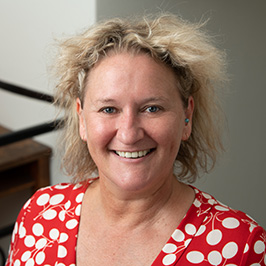Top 10 tips to navigate the rentvesting maze
Here's our top ten tips for successful rentvesting, a strategy for property investing in a cheaper location while living in a more affluent one.
Rentvesting is a strategy for property investing gaining popularity among young and first home buyers who see premium property prices and high rents as a barrier to owning a home.
Renting where you’d like to live while investing where you can afford is actively encouraged by agents but like any investment decision, requires due diligence.
Whether it is choosing the right location for your rentvestment property or negotiating the tax landscape, there are myriad factors to consider to ensure the investment is a success.
Australian Property Investor Magazine spoke to a range of experts around the country on what it takes to live where you want while having a profitable property investment elsewhere.
These are their top 10 tips on rentvesting.
- Live where you want
Research by Well Home Loans, based on SuburbTrends data, lists the nation’s 26 most affordable-to-rent inner and middle suburbs of capital city units and apartments and 30 regional and interstate suburbs in which to buy.
Included on the rental unit list is Brunswick, Victoria, where median weekly unit rent in the coveted suburb is listed as $400 and vacancy rates are 2.5 per cent.

Ray White Brunswick director Jamil Allouche
Ray White Brunswick director Jamil Allouche says apartment rent in Brunswick can be very cheap.
“If you want to lease out a house in Brunswick you’ll be paying $850-$900 a week, which is unaffordable for most but because there’s a lot of apartments it means their prices haven’t gone through the roof.
“You can get a two-bed rental in our corridor for $450 a week, which is reasonably cheap considering the quality and number of cafes, shopping options and public transport connections increasing its livability, so renting in Brunswick is very appealing,” he said.
“Buying an apartment is not really going to have the capital growth prospective investors want over the next five years.
“I tell them they’re better off to go and spend $500,000-$600,000 dollars on a place 25 kilometres out of the city, knowing it’s in a good growth corridor, which ultimately, when you sell it in five years, will make a good 35-40 per cent return.
- Buy what you can afford
The Well Home Loans research also provides a list of 30 suburbs with promising long-term growth potential.
It shows median house prices in regional areas like Goulburn in New South Wales, Brighton in Tasmania, and Nambour in Queensland, all average about $550,000 to buy, while Sippy Downs and Merrimac in Queensland, or Mirrabooka in NSW average between $755,000 and $770,000.
By comparison, the median house price in South Yarra, Victoria, is $2,252,000. Living there as a young couple for $750 per week is doable, buying is not.
- Improve your cash flow

AllianceCorp managing director Jason Paetow
“When you purchase a home and take out a home loan, the interest you need to pay is not tax deductible, so for this reason, a lot of people will take out a variable home-loan that requires both principal and interest repayments,” AllianceCorp managing director Jason Paetow said.
“With investment properties, the interest on the property loan is tax deductible as are many costs associated with maintaining the property, so for this reason, many investment property loans are interest only.
“This means you need to pay less to the bank each month, putting less pressure on your cash flows.
“If you have additional funds every month you can add them to an offset facility against your investment loan that can be accessed later to purchase your home or another investment property,” Mr Paetow said.
- Claim tax benefits
Neither political party has the urge or nerve to remove negative gearing any time soon.
“With negative gearing any money lost through an investment property may be claimed against the tax paid through employment or other investments, while capital gains tax exemptions generally apply to a principal place of residence and only one property at a time,” Mr Paetow said.
“Because a property is either a home that you own or one that you reside in, you can achieve exemptions from capital gains tax, which means when it comes time to sell your property, and you’ve achieved significant growth on that property, you won’t need to pay tax on that gain.
“Typically, this is limited to one property (usually the principal place of residence), so it cannot be scaled across your entire property portfolio,” he said.
As interest is a cost incurred through property wealth creation, that then becomes a tax deductible expense.
“Because of this, many investors opt for an interest only loan on their investment property so they receive maximum tax deductions all the time and you also don’t need to pay tax on money that you withdraw through an equity loan.
“If your property goes up in value and you don’t want to sell your property, you can actually access a portion of that money through a loan from the bank.
“By getting access to that portion, because it’s not a gain that you’ve accessed and you already have the mortgage that outweighs the money you’ve been given, you haven’t actually increased your financial stature through that equity loan therefore, it tends to not be tax-deductible.
“This is a benefit for investors because it means they can take that money and leverage it to purchase more investment properties at a faster rate,” Mr Paetow said.
Australia’s tax regime is one of the most complicated in the world but with the right advice it can be navigated to your advantage.
- Invest anywhere in Australia

Property Investment Professionals of Australia chair Nicola McDougall
“It’s imperative that investors work with a team of experts to ensure they are purchasing a superior property investment in an optimal location as rentvesting often involves purchasing in unfamiliar areas or even interstate,” Property Investment Professionals of Australia (PIPA) chair Nicola McDougall said.
“Rents are rising in many markets across the country, however, rentvestors can partially off-set any increase in their own weekly rents with the corresponding rise in rent in their investment properties elsewhere.
“Consider that the median house value in Adelaide is half the price of Sydney’s, with the median unit value more affordable again, as an example.”
The Well Home Loans research lists suburbs nationally where house prices in the regions or interstate roughly equate to the price of units in certain metropolitan suburbs.
In the $500,000-$600,000 price bracket for example, Tasmania features in five of the 10 most affordable suburbs, (Bagdad, Brighton, Oakdowns, Mornington, Sorell), two from NSW (Goulburn and Cringila) and Queensland (Nambour, Kippa-Ring) respectively, and one in Western Australia (Darling Downs).
- Know when to invest
“While there is merit in considering property cycles, as they do fluctuate, there is also a risk: too much deliberation and hesitation, which leads to inaction - meaning no property purchase at all,” Mr Paetow said.
For example, “Rachel” saves a deposit in 2015 and hesitates to buy a $500,000 home in Footscray. She waits five years for the ‘right time’ but in 2020 the same house is worth $800,000. The money in her account has accrued $3,000 of interest but she missed out on a $300,000 gain.
- Change your mindset

Search Property founder Ravi Sharma
“Open your mind to borderless investing that will ultimately give you more options when looking for the right real estate opportunity,” Search Property founder and buyer’s agent Ravi Sharma said.
“If you stick to areas you know, that happen to be in your backyard, you are leaving a lot on the table in terms of returns and opportunities.
“People think that by renting, we’re paying someone else’s mortgage, when we can just effectively pay our own mortgage down and that’s still going to get us the best result,” he said.
“Unfortunately that’s not the case. The real issue here is that when you’re looking to live somewhere, that may not necessarily mean it’s the best place to invest.”
At 27, Mr Sharma started renting in Western Sydney while investing in regional Australia.
“I had already been investing in regional properties to get the cash flow and capital growth, which made a lot more sense to me than investing in Sydney, despite being born and brought up here.”
- Increase your borrowing capacity
“You must always protect your borrowing capacity and buy properties that support it. Otherwise you will hit a brick wall with finance and the banks will not lend you any further funds to invest,” Mr Paetow said.
“When calculating your borrowing capacity, the banks are looking at cash-flow rather than how much savings or equity you have.
“The big difference when buying a home versus an investment property is that the investment property is usually an interest-only loan and the bank will also consider your tax credits that don’t apply to your home. This will improve your borrowing capacity. If you are still living at home and not paying rent, your borrowing capacity will be even higher.”
- What are the cons?
Mr Paetow recommends ensuring you choose an investment-grade property and have good tenants and adequate insurance.
“By selecting the wrong property, you will be subject to significant financial risk in terms of limited capital growth and rental yield, attracting the right tenant or structural damage.”
Landlord insurance is essential and will cover damages ranging from water damage through to lease break/loss of rent, and it is a tax deduction.
As rentvesting means you won’t live in your first home, the First Home Owner Grant is unavailable plus pride of ownership won’t be part of the experience, he said. When you do sell, capital gains tax will apply and there is some lack of security being a renter yourself for a number of reasons, including the landlord selling or wanting to move in themselves.
- Do your due diligence

Melbourne Real Estate Head of Growth Stephen Fitzsimon
Melbourne Real Estate Head of Growth Stephen Fitzsimon said there were difference between the states.
“What is a unit? In Sydney it’s a different viewpoint than it is in Melbourne. So if they’re calling a unit an apartment that’s fine but a unit in Melbourne is a block of land where they’ve knocked down a house in the 1970s and 80s and built four buildings that are normally single storey, so there’s four “units” on that block that might share a garage wall or a laundry wall.
“That’s where you start to get the confusion - if they’re talking about apartments that’s fine, call them apartments.
He added that the stats were one thing, but living was another.
“If you’re lifestyle is $550 a week in rent and you’ve only budgeted for $420, then I’m sorry, you’re not going to be comfortable living in that shoddy studio apartment in South Yarra while your house in the suburbs is appreciating, because you’re going to be arguing with your partner because you’re living in a dump.
“If you just look at the stats that’s wrong.
“Definitely do your homework,” Mr Fitzsimon said.




















